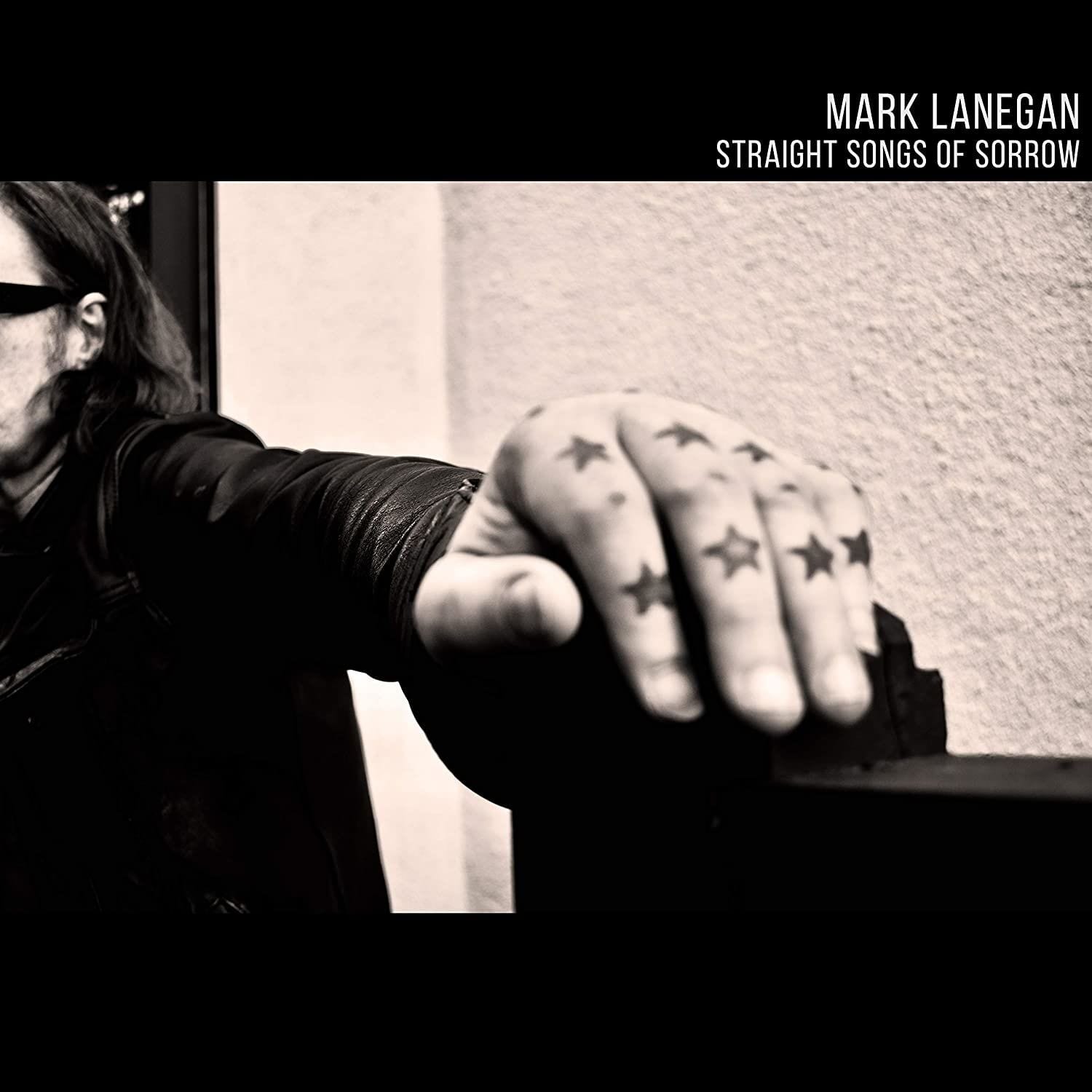
Mark Lanegan‘s death waits there, unrealized, in song after song. Sometimes he sings about cheating death, and in other instances, he seems to be seeking death. More than 35 years into his career as a songwriter, singer, and musician, Lanegan has now released a memoir, Sing Backwards and Weep, which led to a new set of songs, the album Straight Songs of Sorrow. These works tell stories from his life, in which Lanegan wrestles with death, his chief subject.
That Lanegan lives to recollect, long after many of his peers have passed away, is a notable but, at times, distracting aspect of his reputation as an artist. His musical output is remarkable. So considerable is his body of work that one could set aside his career in Screaming Trees, and that band’s foundational contributions to grunge music, and there would still be an abundance of essential solo albums and collaborations to his name. Of course, death runs throughout the collaborations, as well, but not always in an autobiographical sense, which makes it easier to separate Lanegan’s mortality from the music and instead to focus on the unique power of his voice.
An incomplete list of Lanegan’s highlights since Screaming Trees ended includes his contributions to Queens of the Stone Age’s Songs for the Deaf in 2002, his lead vocal on “Number Nine”, the most excellent song from Twilight Singers’ Blackberry Belle in 2003, his album Bubblegum in 2004, his first collaboration with Isobel Campbell, Ballad of the Broken Seas, in 2006, and his writing and singing on Soulsavers’ It’s Not How Far You Fall, It’s the Way You Land in 2007.
Straight Songs of Sorrow follows five additional LPs Lanegan has released since Bubblegum, and these albums have all been evidence that Lanegan’s distinct voice pairs with a surprising variety of styles when the songwriting is up to par. That caveat is especially true on Straight Songs of Sorrow, which features several guest musicians across an hour of music. Here, the quality of the songwriting varies widely, despite the more or less consistent theme of death.
The album’s first three songs are all outstanding, which is likely why they lead the tracklist. On “I Wouldn’t Want To”, one of Lanegan’s more overt and successful forays into electronic music, he sounds invigorated. The crowded production, rushed delivery, and the way he accents words, create an impression of a character that is running out of time. The song also includes a premise for this period of Lanegan’s writing: “Swinging from death to revival / Where I’ve been and what I’ve done.”
In strong contrast with the opening song’s mechanized restlessness is “Apples From a Tree”. Lamb of God guitarist Mark Morton (who featured Lanegan as a guest vocalist on last year’s Anesthetic) contributes a beautiful acoustic guitar performance. “Apples From a Tree” is the shortest song on Straight Songs of Sorrow, and also the most memorable. Lyrically and emotionally, this is a song of absence and longing in which death is described as “taking flight”.
The third song on the album is “This Game of Love”, which is powered by an irresistible interplay of Lanegan’s voice with that of his wife, Shelley Brien. The duet corresponds to the lyrical content of the song, which includes dichotomies of heaven and hell and togetherness and loneliness. After these three songs, however, Straight Songs of Sorrow stalls considerably. None of the five or six numbers that follow are in the same echelon of Lanegan’s songwriting as the opening tracks.
Lanegan has recorded his share of downer songs in his career, but on the droning “Ketamine”, he appears just to spin his wheels in that direction ineffectually. “Bleed All Over” is more filler, featuring a drum machine and repeated lyrical phrases. At one point, Lanegan sings, “I’m haunted… by these monochrome nightmares,” which is sufficiently visual and descriptive. Again, however, the song that contains that line doesn’t convey the feelings he describes. The song is colorless. This section of the album, which also contains “Churchbells, Ghosts” and “Internal Hourglass Discussion”, focuses too much on atmospherics and too little on songcraft.
“Stockholm City Blues” is where the energy of the album increases again, the song’s musical composition subtly developing additional layers as the lyrics express the way an addict tracks time and distance in anticipation of the next fix. Adrian Utley joins Lanegan on “Daylight in the Nocturnal House”, a track that seems suited to a Western film. A chorus of voices floats into the mix like waves, and then electric guitar stabs threaten to take over the song in a way reminiscent of the violent conclusion of Portishead’s “Plastic”.
With the lyrics, “My days are numbered / Eternal slumber / Death is my due,” “Ballad of the Dying Rover” might assume the perspective of a character from “Daylight in the Nocturnal House”. “Ballad of the Dying Rover” is evidence that a rhythm section goes a long way to redeem the rudderless drone ambience present in some of the earlier songs. The Dylan Carlson tribute “Hanging On (For DRC)” is another acoustic Mark Morton song, advancing the album’s theme of escaping death. The remainder of the songs on the album concern damnation, hitting rock bottom, and finally, in “Eden Lost and Found”, the prospect of daylight and freedom to combat darkness and bondage.
In summary, Straight Songs of Sorrow contains an excellent half-hour of music within its hour-long runtime. Death albums are fairly common in recent years. To the degree that Lanegan has chosen to tie his memory to songs about that subject, at his best, he’s a master of the form. However, it’s important to know when to edit. One recent album that is also a chronicle of rough living and torment, Elvis Depressedly’s Depressdelica, covers much of the same emotional ground as Straight Songs of Sorrow, in a little more than half an hour, with no filler. Life may be the “study of dying”, as Lanegan sang in Queens of the Stone Age’s “Song for the Dead”, but the key is to figure out “how to do it right”. Lanegan lives, contending with death through music.
- Mark Lanegan Band: Gargoyle - PopMatters
- Mark Lanegan: One Way Street - PopMatters
- Mark Lanegan Band: 16 May 2012 - Hamtramck, MI - PopMatters
- Mark Lanegan Band: Blues Funeral - PopMatters
- Mark Lanegan: Imitations - PopMatters
- Isobel Campbell and Mark Lanegan: Hawk - PopMatters
- Mark Lanegan Band: Bubblegum - PopMatters

